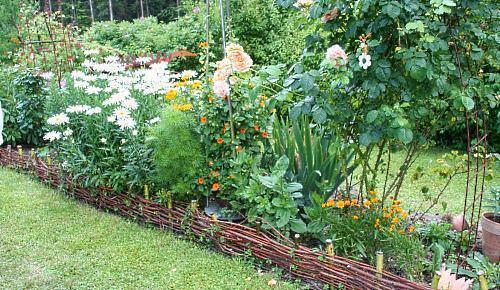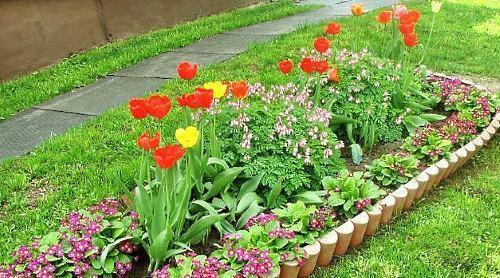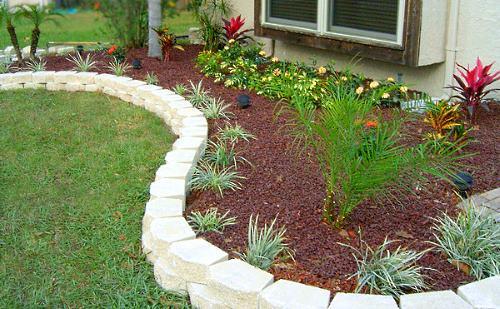We learn to make fences for lawns and flower beds with our own hands
A few tips on how to make your own lawn fence will help you achieve the desired result. As a result, a number of secondary tasks will be instantly resolved:
- a small and pretty fence will make it possible to arrange the entire site in more or less the same style;
- the whole territory will take on a much tidy and well-groomed appearance;
- planted plants and grass will remain within the lawn, and not spread beyond the boundaries of a specially designated area;
- the fence will allow you to divide the site into functional zones;
- the fence will prevent guests from accidentally entering the space of inconspicuous young sprouts.
Of course, there are many specialty shops where you can buy fences for every taste, but the price of purchased fences can be high. And your own hand-made fence will look much more comfortable and home-like. After all, creating such a miracle is quite simple from a variety of materials at hand.
Dry rod fencing
Wicker fences look very cute and economical. But making such a wattle fence will take some time and a little effort. However, this is not so important, because in the end you will get a fantastic result that will delight you for more than one year.

The material for the wicker fence is quite easy to get. All you need to do is go to any body of water and collect willow twigs. It is best to harvest them in early spring. At this time, the bark can be easily separated from the main vine. This is necessary so that the fence is much stronger and takes on a nice light shade.
When the preparatory work has passed, you can take on the manufacturing itself. Before starting weaving, it is important to make all the twigs the same length. Further, along the entire perimeter of the lawn or flower beds it is necessary to evenly install thick pegs, about 3 centimeters in diameter. The distance between the support stakes depends on the degree of strength you want to get the fence. Then everything is simple: the installed pegs are braided according to the basket weaving pattern. The number of rows depends only on how high the fence should end up. For the best effect, after completing weaving, you can additionally secure the twigs with nails.
A fence made of logs
Miniature blocks dug into the ground can easily serve as a lawn fence. It is important to know that it is best to harvest logs of the same diameter and approximately the same height. And it is necessary to take into account an important circumstance - the decks of 20 centimeters will go under the ground.

Further, everything is clear enough. It is necessary to dig a shallow ditch around the lawn. The logs should be placed vertically in the resulting groove, but only very tightly. Then the remaining grooves are covered with earth to the same level as the lawn.
Bottles and bricks - a fence for the soul
Laying a brick fence is quite simple.To do this, you do not need to mess with the solution at all, because the even sides of such material form a reliable adhesion. Brick curbs are laid according to the principle of erecting a fence made of logs. Only in this case can the fired clay blocks be installed at various angles.

Fencing from plastic bottles is the most economical solution to this issue. However, such a fence can be very easily damaged and deformed, but it will not be difficult to build the same new one. Any free-flowing material is poured into the bottles, and then they fit as you wish. However, plastic containers can be cut. In this case, only the lower parts need to be used. They are carefully deepened into the ground a few centimeters tightly to each other.
Now it's even easier to protect your lawn. One has only to spend a short period of time once, and then for several years you can enjoy the man-made beauty and ennobled land plot.
65 interesting ideas for fencing flower beds and lawns - video